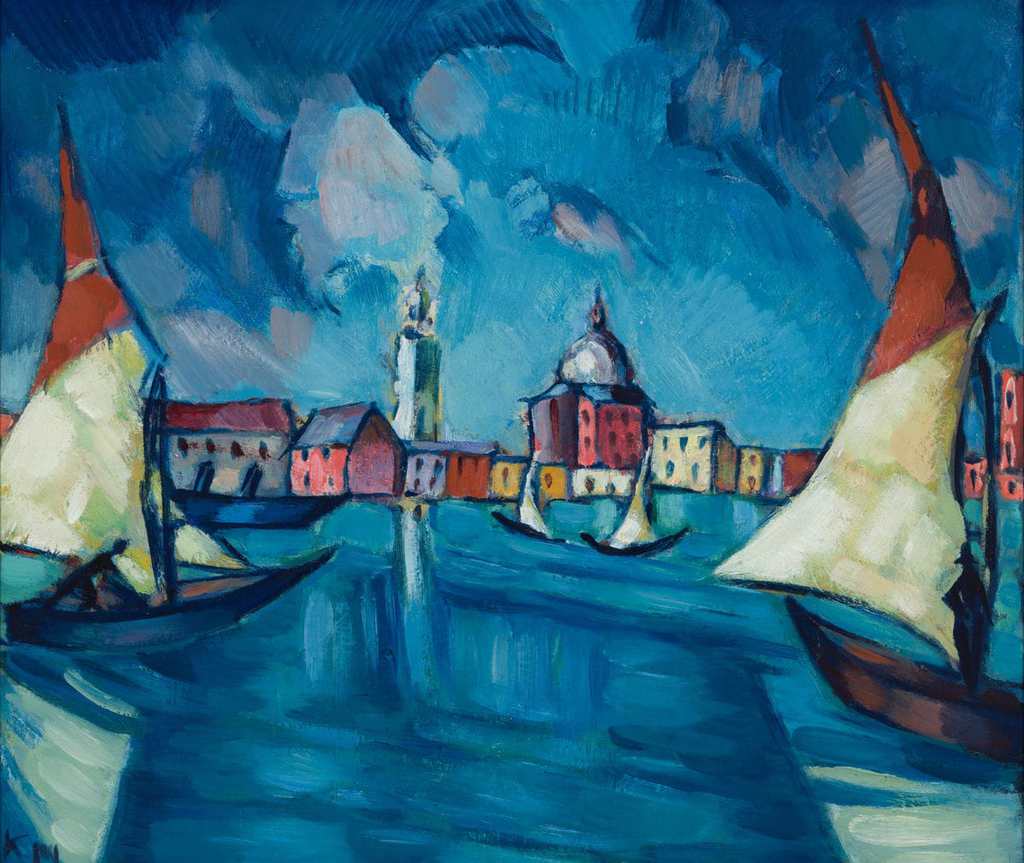
Mägi arrived in Venice in June of 1922 and stayed there until August. Some ten of his paintings with Venice as their subject have survived. The variation of one main motif in other works is frequent: subjects repeat in many paintings that are also in "Venice": gondolas, the towers and houses of the city in the background, the blue sea in the foreground.
Mägi started programmatically painting the city for the first and last time in Venice. We do not know of that many cityscapes from his preceding trips to St. Petersburg, Oslo, Paris, Copenhagen, Brussels and also Rome, although he painted a few paintings with metaphysical undertones in Rome as well. As far as is known, Mägi did not paint a single painting even of Tartu, where he lived for decades. It can nevertheless be said that his attention was often focused on something else other than the urbanistic environment even in the case of Venice. In this painting as well, we see how the city is reduced to a distant strip floating on the horizon since the focus is on the sky and the sea – dynamic environments that are constantly changing. Sailboats frame the view on the right and left-hand edges, copying the so-called coulisse motif that is often used in older paintings, where the view of the landscape opens up through trees in the foreground that frame the view. Mägi has painted vigorously and with a broader paintbrush than before. There are fewer brushstrokes than before for one painting, yet much as before, they are often in a direction that adds a certain sanctity of verticality to the painting – note for instance the brushstrokes that race from church towers towards the sky, leaving the impression as if a particular energy were bursting forth from the churches. As before, reflections also occupied an important place for Mägi. Hence he has quickly sketched the reflections of a church tower and white sails on the water surface. These add both mystery and spatiality alike to the painting. Yet Mägi’s decision to also use red tones, which repeat on the upper edges of the sails as well as on the walls of houses, in addition to the dominant blue, stands out separately, adding something important to the emotional as well as metaphysical dimension of the painting.